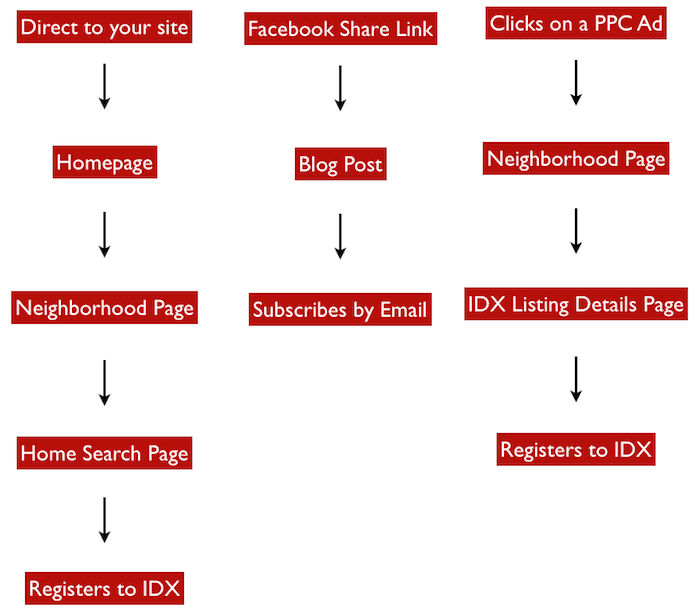 As the year comes to a close you’re probably busy with new ideas for how you’re going to market your business come January.
As the year comes to a close you’re probably busy with new ideas for how you’re going to market your business come January.
There’s all kinds of different things you can do to bring in new customers …
… write more blog posts.
… switch to a different IDX provider.
… invest in a pay-per-click campaign.
… try a new CRM and build a better email marketing campaign.
… engage more in social media.
But what specifically should you focus on?
Where should you spend most of your time?
How do you know if something is working or whether you’re screwing it up?
What’s Wrong With Your Marketing and What To Do Instead
Often times people make decisions about what to do with their marketing by looking at what they’re not currently doing.
They’ll say things like:
…”I should really get on Facebook more so that more people will like my Page and buy with me.”
…“I should really buy some pay-per-click campaigns to drive more traffic to my site and generate more leads.”
…”I should redo my website, maybe that’ll get more people to work with me.”
…“I should really spend more time engaging with people on twitter to generate more leads.”
…”I should really develop a Pinterest strategy.”
The problem with this type of marketing is that it’s like throwing spaghetti to the wall hoping that some of it sticks when instead you should be focusing on what’s already working.
Focus less on what’s not working and focus more on what is working.
Understanding Userflow and Where Your Leads Are Coming From
Userflow is the path a user follows through your websites to complete a task (opt-in to your newsletter, register to your IDX, conduct a form submission).
In order to improve your conversions you need to understand where your users are coming from.
What page did they enter from (a neighborhood landing page)?
How many pages did they click-through and read before existing your site?
Here are 3 sample user flows:

The more you understand how users are interacting with your site, at what point they’re registering, or exiting, the more knowledge you have to be able to improve the user experience and improve your conversion rate.
So in the scenarios above, if you know that users regularly clicks on your PPC ads and registers to your IDX, but few ever subscribe via email coming from Facebook, well, then you know to invest a little less on Facebook and a little more on PPC.
As we move into the new year here’s the lesson I want you to take away:
Focus on improving the traffic that you’re already getting or improving your conversion rate once they land on your site before investing your time trying to add different marketing channels.
If you know “X” strategy is working, then double-down on “X” and who knows, you might double your results. Then when spending more time investing in “X” doesn’t pay off anymore, then and only then, do you move on to trying something new or investing in another marketing channel.
It’s when you jump around from one shiny new strategy to another that you’re screwing up your marketing. And nobody wants that. Nobody wants an ineffective or inefficient strategy.
Look at what’s already bringing in customers (or subscribers, or IDX registrations, or form submissions).
Improve it. And/or do more of it.
Yeah, I know. It’s not an earth shattering new strategy. But it’s what works.
Hope you’re enjoying the holidays. And here’s to making next year even better!
Sit tight… I’ve got some great content coming your way!

Tracking your business from the beginning is so important when it comes to marketing. How many times have you talked with agents and they had no idea where their web traffic and conversions were coming from.
It happens all to often, my friend. It’s better to have a thorough understanding of exactly what’s working rather than guessing.